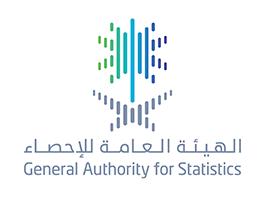
الهيئة العامة للإحصاء : وفق مسح ممارسة الرياضة للأسر بالمملكة ( 14.89% ) من السكان يمارسون الرياضة لأكثر من 150 دقيقة في الأسبوع
New survey to be released for the first time in cooperation with the General Sports Authority,
GASTAT: According to the survey of Households Sports Practice in Saudi Arabia (14.89%) of population are practicing sports for more than 150 minutes’ weekly
On Tuesday 15th of Shaaban 1439H, corresponding to 1st of May 2018, GASTAT has released the results of Households Sports Practice Survey, 2017. The survey complements the surveys implemented by GASTAT in 2017. Households sports practice is one of the Saudi vision 2030 requirements. In addition, this kind of practice includes indicators that are targeted by 2030. The data of this survey allows conducting many developmental studies and plans in general, and in the sports field in particular. These studies and plans should support the development of many programs and initiatives that do increase the rate of households sports practice. The survey methodology and form must be compatible with the international standards and recommendations issued by ILO on one hand, and with the General Sports Authority needs on the other hand.
According to the survey results, the percentage of individuals (15 years and older) who are engaged in sports activities for more than 150 minutes weekly reached (14.89%). However, those who do not practice sports recorded (85.11%). Moreover, the percentage of Saudi males and females (15 years and older) who are engaged in sports activities for more than 150 minutes’ weekly registered (11.24%), (8.83%) of whom are males and (2.41%) are females. On the other hand, the percentage of non-Saudi males and females who are engaged in sports activities hit (3.65%).
The results also indicated that the percentage of those who practice sports in public facilities (public place, garden…etc) is 59.04%. in contrast, those who practice sports in GYMs registered 15.11%, while those who practice it at home recorded 14.75%. Additionally, the percentage of individuals who practice sports in clubs recorded 1.63%, whereas those who practice it in other places registered only 1.19%
The survey revealed that the reasons of not practicing sports among Saudi population varied. Some people have chosen not to practice it with a percentage of 50.47%, and some do not have time to practice (32.11%). However, some people do not have public facilities in their neighbourhoods (14.65%), and some have other reasons for not practicing (2.77%).
The survey aims at providing recent statistical indicators and data about households’ sports practice. In addition, it provides the reasons behind not practicing sports by kind of relationship with the household head, and classification by gender, nationality, educational status, age, marital status. Furthermore, it provides data about the percentages of individuals engaged in sports activities on at the administrative regions level.
GASTAT will work on improving the survey indicators periodically in cooperation with the General Sports Authority, in a way that supports the 2030 Saudi vision achievement.
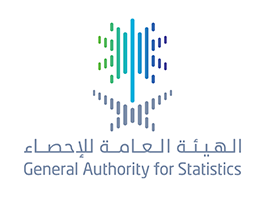
الهيئة العامة للإحصاء: ارتفاع مُعدَّل المشاركة الاقتصادية، واستقرارٌ في مُعدَّل البطالة بين السعوديين
Within the results of labor market bulletin, quarter 4, 2017
GASTAT: Saudis’ economic participation rate increased, and unemployment rate remained stable
The General Authority for Statistics (GASTAT) releases on its official website www.stats.gov.sa the Labor Market Bulletin for the fourth quarter of 2017, which provides comprehensive data and indicators on the Saudi labor market taken from the labor force survey conducted by the Authority on a quarterly basis, and from the administrative records of some relevant entities (Ministry of Labor and Social Development, Ministry of Civil Service, General Organization for Social Insurance, Human Resources Development Fund and National Information Center).
The results of the bulletin (third quarter, 2017) showed an increase in the economic participation of Saudis (15 years and older) as it reached (41.9%) compared to (40.7%) in Quarter 3, 2017, with an increase of (1.2%). The results indicated that the economic participation of Saudi females has increased by (19.4%) compared to (17.8%), whereas, Saudi males’ participation has increased by (63.4%) compared to (62.6%) in the third quarter of 2017. However, the results demonstrated a stability in the unemployment rate of the Saudi population for the third time, where it stabilized at (12.8%), the unemployment rate of all population (Saudis and non-Saudis) has registered (6.0%), with an increase of (0.2%) compared to the previous quarter. The results also showed a decline in the unemployment rate of Saudi with (31.0%) compared to (32.7%) in quarter 3. On the other hand, Saudi males’ unemployment rate has registered an increase by (7. 5%) compared to (7.4%) in quarter 3. Moreover, the results indicated that according to the administrative records of Saudi Arabia, there is a decline in the numbers of Saudi job seekers during the fourth quarter of 2017, as they reached (1,086,561) persons with a decline of (11.8%) compared to the third quarter of 2017. In contrast, the numbers of Saudi employed persons have increased by (3.3%) with (3,163,846) persons.
The bulletin included a large number of detailed data about workers according to the regulations they are subject to, nationality, gender, age, administrative region, and educational level, as well as data about job seekers, average monthly wage, working hours and domestic workers.
On the other hand, the official spokesman of the General Authority for Statistics (GASTAT), Taiseer Al-Mofarrej, clarified that when comparing the unemployment rate of total population ( Saudis and non-Saudis) in Saudi Arabia, which registered (6%) in this quarter, with the unemployment rates of the Group of Twenty (G20), we find that Saudi Arabia is in the average rate, as ten countries among which is Saudi Arabia has registered rates ranging between (4%) and (7%). The below table shows the unemployment rates of G20:
Unemployment rates in G20
Country
Unemployment rate
South Africa
26.7
Brazil
12.6
Italy
10.9
Turkey
10.8
France
8.9
Argentina
7.2
Canada
5.8
Saudi Arabia
6
Australia
5.5
Indonesia
5.5
Russia
5.0
South Korea
4.5
United Kingdom
4.2
United States
4.1
China
3.9
Germany
3.8
India
3.5
Mexico
3.2
Japan
2.5
Almofarrej added, the results of the labor market bulletin, Quarter 4, 2017 have showed the tendencies of jobseekers in the Saudi market, as the percentage of those who seek a government job reached 38%.
It is worth mentioning that GASATAT has previously clarified the difference between job seekers and unemployed, and that unemployment rate cannot be calculated based on the number of jobseekers that is registered in the databases of other government entities. The "unemployed" according to the Labor Force Survey are individuals (15 years and older) who were jobless during the period of the time reference (the survey period): the previous week of the household visit and have been looking for a job seriously during the four weeks prior to the household visit (they have at least taken one way to look for a job). This includes those who did not search for jobs during the four weeks prior to the household visit because they were waiting for a job or starting their own business in the coming period, where they had already been looking for work before the time reference period and at the same time they were able to work and were ready to join it (If available), during the week preceding the household visit.
Additionally, jobseekers can be defined as Saudi individuals (males or females) enrolled in the job search programs of the Ministry of Civil Service (Jadarah or Saa’ed) and the Human Resources Development Fund (Hafiz), and they register their personal data, qualifications, practical experiences and CVs through an electronic system.
Not to mention that job seekers in the administrative records are not subject to the internationally recognized standards and conditions of unemployment approved by the ILO, and therefore are not considered to be unemployed. Hence, not every job seeker is considered unemployed, S/he may be looking for work and is working in another job, this is the case in those who seek a government job and are working, for example, in the private sector and not registered in the records of the General Organization of Social Insurance (GOSI), as if there is a jobseeker and s/he works in the private sector and subscribed in GOSI, s/he ca not be considered within jobseekers in the labor market bulletin.
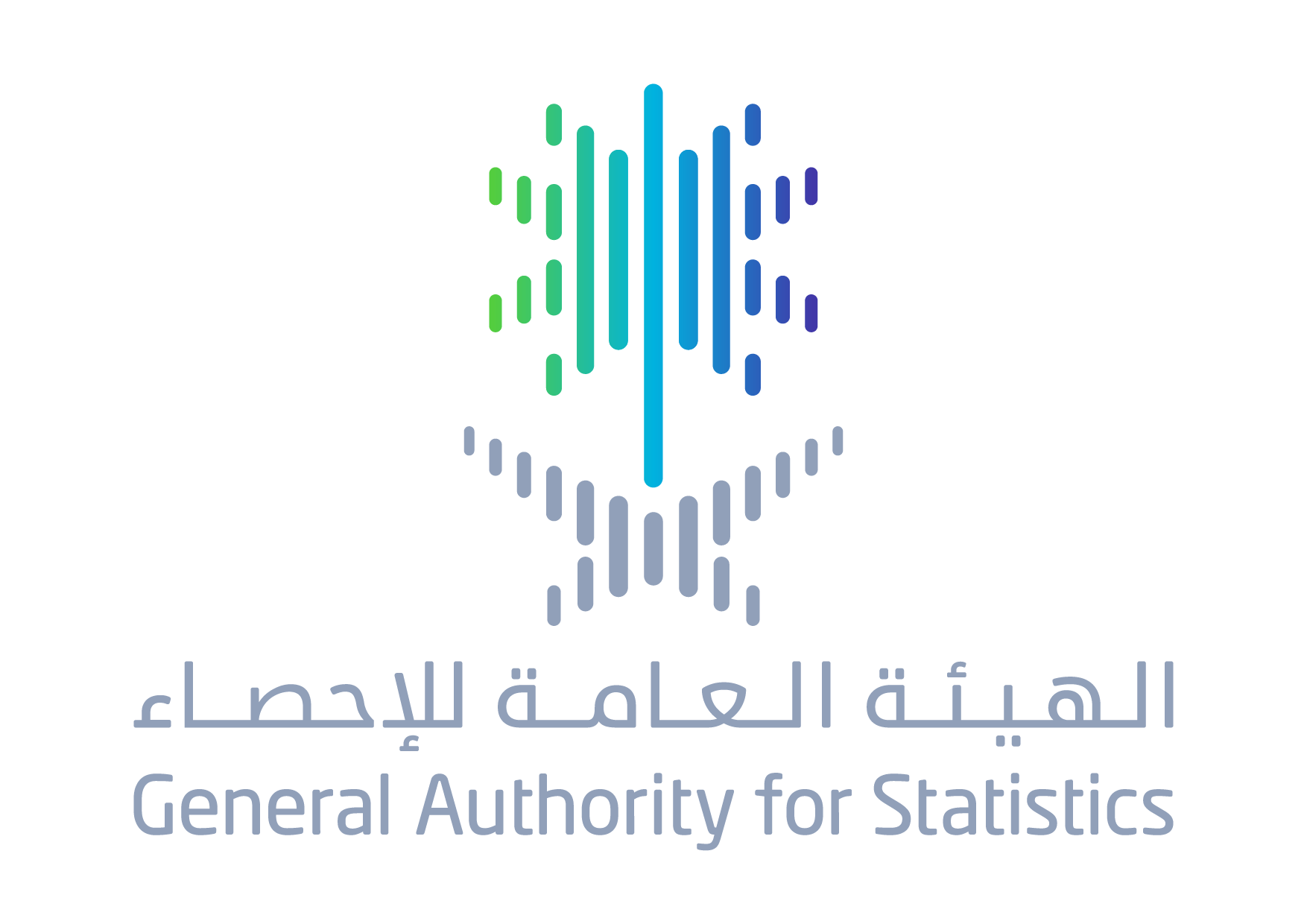
الهيئة العامة للإحصاء: انخفاض مؤشر أسعار العقارات خلال الربع الأول 2018
GaStat: A Decline in the Real-Estate Price Indicator During the First Quarter of 2018
On Monday, the 7th of Shaaban 1439H corresponding April 23, 2018, The General Authority for Statistics (GaStat) released the report of Real Estate Price index, Q1 2018. The report is published on GaStat official website www.stats.gov.sa.com .Furthermore, the indicator is based on the data records about real-estate’s transactions available at the Ministry of Justice, and it is an important tool to support economic and statistical decision makers regarding the changes of property prices and future forecasts during different periods of time.
According to the report, the real-estate price index has recorded a decline by (1.5%) compared to the same quarter of last year (Q1, 2017). The report attributed this decline to the decrease in the main sectors composing it: the housing sector (2.0%), the commercial sector (4.4%), and the agricultural sector (0.4%).
Moreover, the indicator edged down (0.5%) compared to the previous quarter (Q4 2017) reaching (84.2%) in the first quarter of 2018 compared to (84.6%) for the previous quarter. This decline can be attributed to the main sectors composing it where they witnessed varying degrees of decline: (0.7%) for the housing sector, (0.5%) for the commercial sector and (0.1%) for the agricultural sector.
It is worth mentioning that the indicator of the Real Estate Price index, which aims at founding outstanding real-estate statistical indicators that measure the performance of Saudi real-estate market and meeting the data needs in this sector, covers three main sectors consisting of several types of real estate: housing sector which includes the following (plot of land, building, villa, apartment and house), commercial sector includes (plot of land, building, exhibition, commercial center or shop), agricultural sector with one category which is the agricultural land.
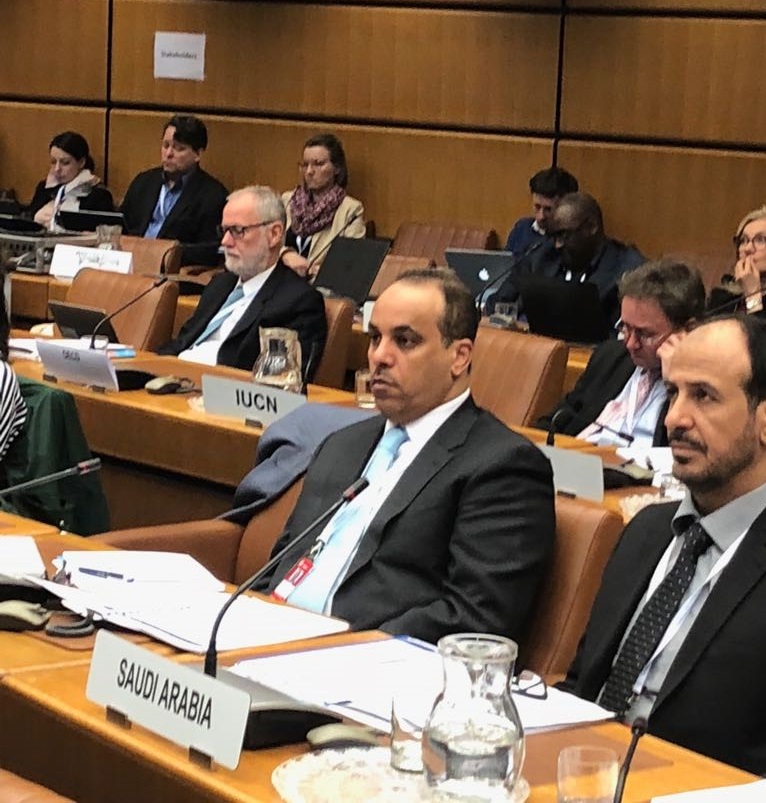
المملكة تختتم مشاركتها في أعمال الاجتماع السابع للمنظمات الدولية المشاركة ومجموعة الخبراء لمؤشرات أهداف التنمية المستدامة
The General Authority for Statistics (GaStat) is the responsible entity for building indicators of the Kingdom's sustainable development goals
The kingdom concludes its participation in the 7th meeting for the participated international organizations and the experts team of the sustainable development goals’ indicators
The kingdom concludes its participation in the 7th meeting for the participated international organizations and the experts team of the sustainable development goals’ indicators. This meeting was hosted by the United Nations Industrial Development Organization (UNIDO) between 9-13 of April to review the classifications of the sustainable development goals, discuss the implementation of the guidelines of data flow, report the global data, document the best practices in reporting the global data, and to review a number of suggestions to obtain additional indicators for the sustainable development.
The president of GaStat, HE Dr.Fahad bin Sulaiman AL-Tekhaifi , who headed the Saudi delegation participating in the meetings, affirmed that Saudi Arabia is one of the countries that made significant progress in achieving the goals of the sustainable development, since that GaStat is the official entity responsible for building indicators of sustainable development in accordance with the governance of the work of statistical entities accredited to all countries to enable access to data of the index production. And that is through making a plan to collect the data of the index production whether by the implemented surveys, implementing new surveys, adding new questions to the existing surveys, or through the administrative records. in addition, identifying the government entities that produce data related to those indicators and follow-up the international and regional work of the sustainable development goals in particular and other development goals in general. HE added that GaStat has the membership of the regional committee which includes the Standing Committee for Progress Indicators and Sustainability 2030 of the GCC statistical centre. GaStat has also examined the current situation of the sustainable development goals 2030, identified its sources and availability in the Kingdom, as well as its periodicity, coverage and classification.
It is worth mentioning that The United Nations General Assembly in partnership with the member countries, international organizations and civil society have identified (17) goals, (169) purposes and more than (2440 indicators for the sustainable development, and have also established the Inter-Agency Expert Group for the Indicators of Sustainable Development Goals (IAEG-SDGs) on 6 March 2015, which is composed of member countries, including regional and international agencies. The Kingdom of Saudi Arabia, represented by GaStat, participates in all meetings of committees and organizations related to sustainable development.

الهيئة العامة للإحصاء تثمِّن انعقاد الملتقى الثاني للجمعية السعودية للعلوم الإحصائية وتؤكد أهميته
To be organized by King Khalid University on the 8th of Shaaban
GaStat is stressing on the importance of the second symposium of the Saudi Association for Statistical Sciences
The General Authority for Statistics (GaStat) is stressing on the significant role of the academic sector as it represents one of the four main components of the Saudi statistical sector, which consists also of GaStat, and the statistical units in the public and private sectors. The vice president of statistical innovation and customer service, Dr. Mohammed Alahmed said that the second symposium of the Saudi association for statistical sciences, which will be held on 8/8/1439 H, and organized by King Khalid University under the patronage of the president of King Khalid University, Dr. Falleh bin Raja Allah Al-Solamy, entitled “ The Role of Statistics in Big Data Revolution” is one of the plans that GaStat works on to activate the role of the academic sector including the universities, faculty members, and students. In this respect, he indicated that GaStat is implementing many projects and programs in cooperation with many universities for the purpose of involving the all statistical divisions in the future plan of statistics in Saudi Arabia.
It is worth mentioning that the second symposium of the Saudi association for statistical sciences which will involve a number of scientific lectures presented by some statisticians is considered a good opportunity for all those who are interested in statistics, so they can nominate themselves to the association’s board of directors through convening a general meeting which is preceded by a number of activities.
The Saudi association for statistical sciences was established at King Khalid University in 1425 H. it was established to achieve a clear vision through which the association can participate in developing the Saudi society. This association seeks to create means of communication between those specializing in statistics through convening and organizing seminars and conferences, in addition to building statistical software and technologies, working on new statistical teaching methods, and providing consultations and applied scientific studies for the public and private sectors. It also seeks to support and promote cooperation between researchers in different fields of the statistical sciences inside and outside the Kingdom.
Moreover, The Saudi association for statistical sciences seeks to apply its ambitious plan after restructuring its board of directors during the symposium. This plan is represented in holding international conferences and national seminars within the frame of its approach, which attempts to improve the scientific research in the field of statistics. The association also works on developing the statistical field and activating its role in the society. In addition, it seeks to achieve a scientific communication between its members, strengthen its relations with the universities and the other Saudi institutions, exchange the scientific production and ideas between the scientific authorities and institutions inside and outside Saudi Arabia, in addition to opening other branches of the association in some Saudi universities.

الهيئة العامة للإحصاء وجامعة الملك سعود تؤسسان المرصد الوطني لمشاركة المرأة في التنمية
To build detailed indicators that observe woman’s participation in development
GaStat and KSU Establish National Observatory for Woman's Participation in Development (NOW)
GaStat has signed a memorandum of understanding with King Saud University KSU as part of its policy to meet the needs of customers in the public and private sectors and to establish effective partnerships with all relevant parties, and as part of its attempts to provide innovative statistical products in accordance with international standards; in addition to its efforts to develop the necessary indicators for future and current needs. Moreover, the signing was within the agenda of the first conference of the National Observatory for Women (NOW) titled "The role of women in development towards a thriving economy" which will end on Thursday 19 of Rajab 1439H. The conference aims to evaluate and enhance the role of women in development as well as identifying detailed indicators for their participation in the development fields.
The memorandum was signed by GaStat and KSU with the presence of HE the Minister of Labor and Social Development. It seeks to a cooperation with the Authority within the scope of work of “NOW”; specifically, in building detailed indicators to observe those participations. It also aims to update the indicators periodically, prepare and implement statistical studies to support and improve woman’s participation in development. The memorandum also calls for unifying the efforts and data sources as well as maintaining the security and privacy of data; delivering them to decision makers and beneficiaries based on agreed standards. Additionally, the memorandum requires cooperation and integration between GaStat and NOW to provide electronic services through data exchange to serve the public interest and that is within the authorities of GaStat and NOW.
As a result, GaStat will provide NOW with the related statistical data to build the indicators of woman’s participation in development especially that increasing the woman’s participation is one of the objectives of the Kingdom’s vision 2030. The memorandum also indicates the cooperation between GaStat and NOW to exchange data as well as economic and development statistical indicators that support the work of NOW through (GSN).
On the other hand, the president of GaStat Dr.Fahad bin Sulaiman AL-Tekhaifi confirmed that signing the memorandum of understanding with KSU comes within the framework of GaStat to achieve the statistical transformation in the Kingdom and he also stressed on the importance of the partnership of the academic sector with government entities. Moreover, his excellency explained that NOW has appeared along with the transformations witnessed by the national economy from restructuring and building economic base that relies on diversity and optimal utilization of the great potentials of Saudi woman.
Dr.AL-Tekhaifi indicated that government entities are living in an exceptional stage of support with the availability of participatory tools for the development journey, and that NOW will deeply analyze the statistics related to woman’s participation in development in all its areas to support policy and decision makers.
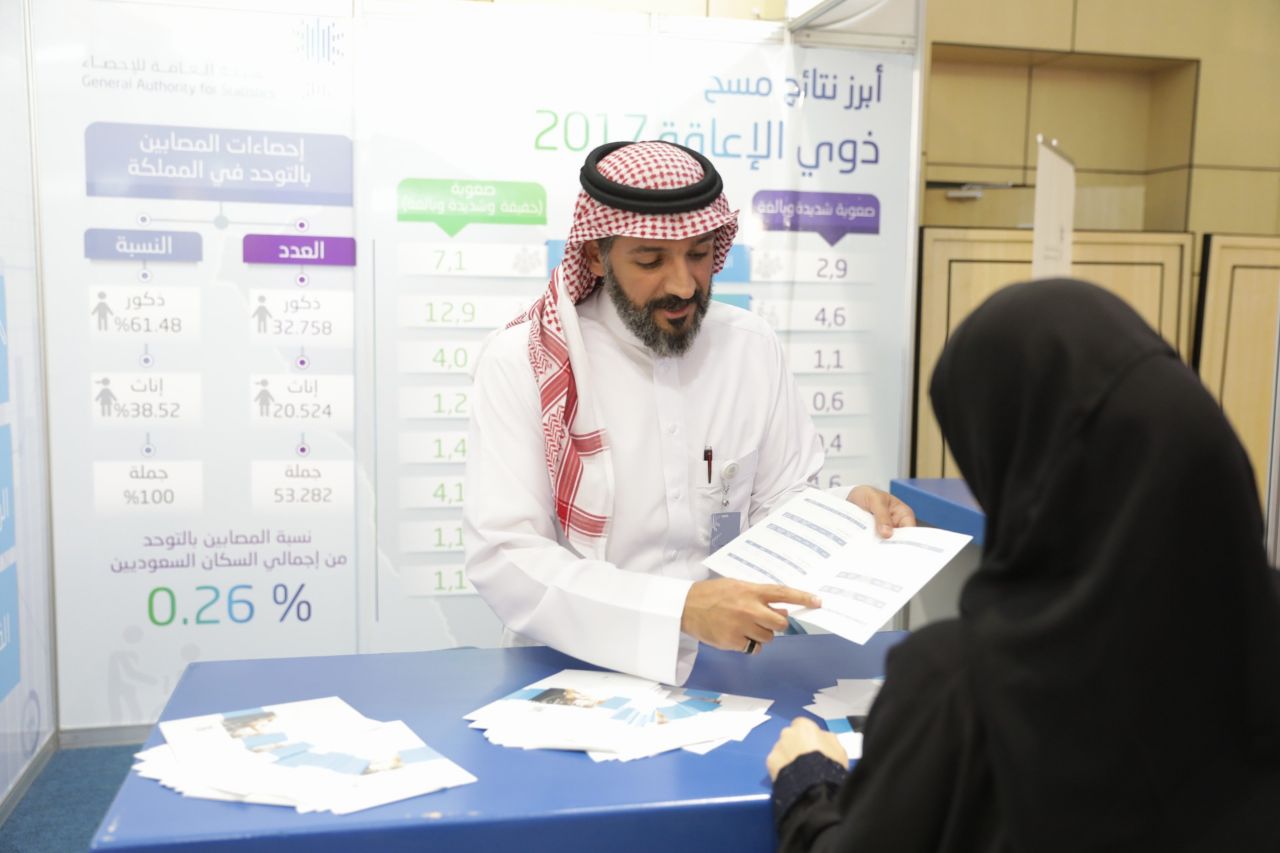
الهيئة العامة للإحصاء : (2.9 %) نسبة انتشار الإعاقة ذات الصعوبة ( البالغة ) بين السكان السعوديين

الهيئة العامة للإحصاء : متوسط معدل النمو السنوي للسكان بالمملكة 2.52%
According to the population characteristics survey, July 2017
GaStat: Population annual growth rate in Saudi Arabia is 2.52%
The General Authority for Statistics (GaStat) indicated that during the previous period, the authority has conducted a set of population statistics surveys, last of which was the population characteristics survey which has been implemented on the field during the period from 17/7/1438 H to 22/8/1438 H corresponding 14/4/2017 to 18/5/2017.
GaStat spokesman, Taiseer Almufarrij said that according to the population characteristics survey2017, the number of Saudi Arabia’s population is (32552336) compared to (31742038) which is the number registered in the demographic survey 2016, with a growth rate of (2.52%). The population are distributed by gender (57.48%) males, and (42.52%) females in 2017 (1438H). those percentages are similar to the percentages of 2016’s survey where males registered (57.44%) and females registered (42.56%). According to 2016 survey results, the number of Saudi population was estimated at (20,064,970) with an increase of (343.392) persons. However, Saudi population are distributed by gender with (50.95%) males and (49.06%) females in 2017 (1438H). those percentages are similar to the percentages of 2016’s survey where males registered (50.96%) and females registered (49.04%).
Almufarrij added that the survey contained households’ data including the marital status, educational status, demographic structure of Saudi and non-Saudi population on the level of Saudi administrative regions. Through the survey, many indicators were extracted such as mortality rate, population’ age and gender structure, and levels of marriage and divorce.
On the other hand, GaStat has started working with specialists and experts from some governmental entities and followed a number of steps in preparation for 2020-1441 H census. The data of this census includes demographic, economic, and educational characteristics of population, dwelling characteristics that are represented in the geographical and distinct data, and dwelling housing characteristics.
